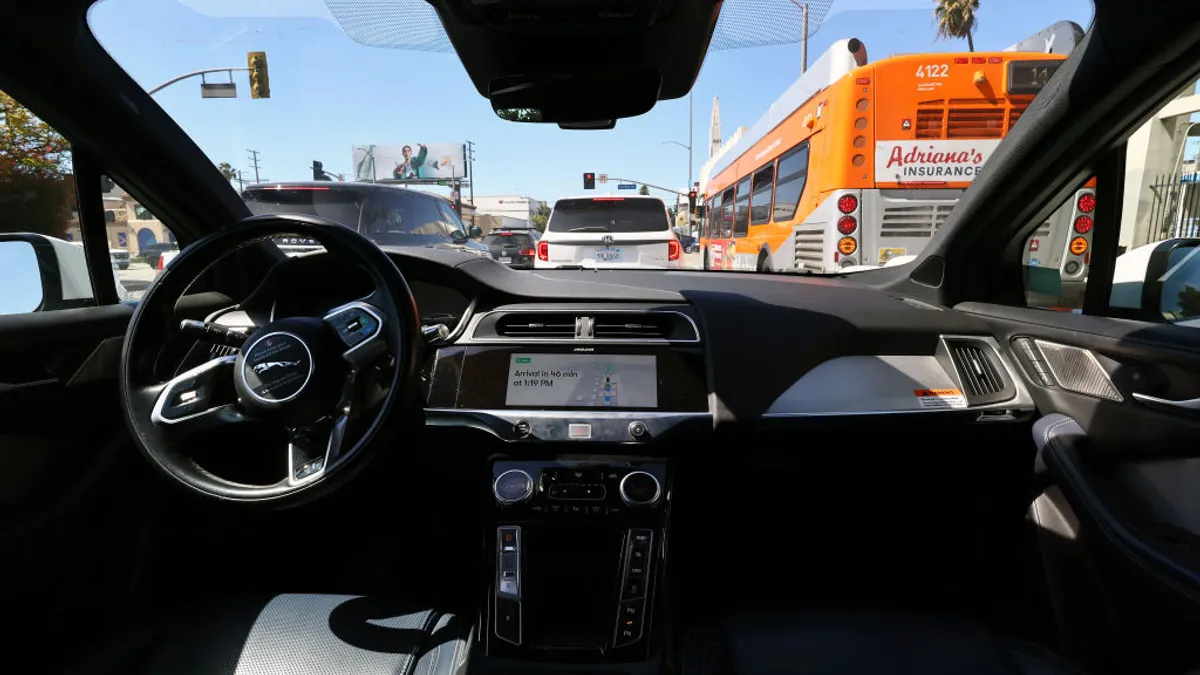Dive Brief:
- The safety of autonomous vehicles, from big rigs to robotaxis, recently generated a range of opinions in response to a recent governmental request for comment on artificial intelligence risks and opportunities.
- Commenters included the Autonomous Vehicle Industry Association, Owner-Operator Independent Drivers Association, universities, state transportation officials and more.
- The U.S. Department of Transportation's Advanced Research Projects Agency - Infrastructure gathered the comments during a three-month period. It was in response to the Biden administration directing the fledgling agency to explore issues and prioritize funding possibilities.
Dive Insight:
Self-driving vehicles might alleviate current roadway risks associated with distracted driving, impairment and fatigue, but the technology isn’t perfect, commentators wrote.
Polling suggests most motorists are concerned about sharing the road with driverless cars and trucks, but regulations could address many people’s concerns, according to the organization Advocates for Highway and Auto Safety.
Traffic analyses involving Waymo, the Chamber of Progress and the Virginia Tech Transportation Institute found AVs could reduce fatalities, AVIA wrote in its comments. “In addition, autonomous trucks have demonstrated a remarkable safety record, without a single fatality in more than seven years of operations and millions of miles driven on public roads,” CEO Jeff Farrah wrote in comments to the government.
But OOIDA voiced another side. “Despite the various claims that AVs will lead to zero deaths, there continue to be real-world situations in which automation has devastatingly failed,” President and CEO Todd Spencer wrote in comments to the government. “Unfortunately, mostly voluntary reporting requirements have left truckers and the general public in the dark about the safety and reliability of autonomous technologies to this point.”
In a statement to Trucking Dive, the trucking group suggested that an automated commercial motor vehicle should not be operated unless a human operator is physically present as a fail-safe to the technology. OOIDA also noted research from Colorado State University about how a semitruck’s electronic logging device could be hacked and said AVs are much more vulnerable than ELDs.
AVIA’s Farrah called on the federal government to execute on its rulemaking, citing instances where regulations have lingered. Among those, he said a Federal Motor Carrier Safety Administration regulation involving an AV framework should be completed.
A supplemental advance notice of proposed rulemaking from February 2023 suggested the FMCSA is considering whether a motor carrier should have to notify the agency if it’s commencing interstate AV operations.
The Texas Department of Transportation also weighed in on AVs, saying autonomous traffic systems are “set to transform safety and mobility in transportation,” predictive maintenance could help avert breakdowns, and cyberattacks and software glitches could create risks. The department called on adhering to stringent safety standards and cultivating public trust in autonomous technologies.
Additionally, the Pacific Northwest Transportation Consortium stressed the importance of addressing liability in AI and AV situations.












